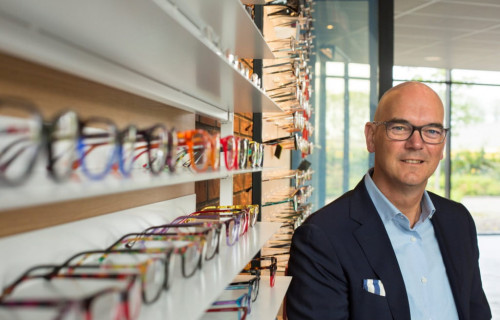
Key-findings of data-driven planning at ProRail
- Focus on strategic goal: 30% more capacity for trains by 2030
- 1000+ users get real-time insight into performance
- Reliable outlook for the next 3-7 years gives push to market expansion
- Step towards more added value for the business in general
By 2030, ProRail aims to have 30% more capacity for running trains. That demands a lot from the organization and the management. Data-driven insights are therefore indispensable. Dashboards in Microsoft Power BI provide real-time information about the performance, trends and consequences for the planning of track works. This improves process-oriented and data-driven decision-making so that ProRail can fulfil its strong growth ambition.
Predictability from data-driven planning
The availability of materials and specialists, among other things, is a crucial factor in enabling more trains to run in 2030, whereby customer nuisance during work must be optimized. The key to expanding this tight market lies in the predictability from ProRail. “To prepare the track for 2030, for example, we need more switches. If a producer has to invest in extra production capacity for this, we want to be a reliable partner,” says Rogier Leemans, Senior Analyst Data Management at ProRail.
Data-driven planning, including monitoring and analysis, contributes to this. “We can now look more reliably to the next 3-7 years,” says Siert-Jan Bolt, Manager Reporting & Analysis at ProRail. A fundamental step for the growth ambition, says Rogier: “With this, we can really give the market expansion a push.”
Making a complex organization more data-driven using Power BI
In addition to its considerable strategic ambition, ProRail has to deal with both day-to-day operations and long-term projects. Dashboards in Power BI give one overall picture, which everyone can look at from their own dynamics. “We’ve made a significant step forwards,” says Siert-Jan. “The dashboards help to make finance and the operational management of projects more data-driven. As a result, we have more impact”.
Power BI is also used for the planning of the strategic program. Not only for reporting but also as a rapid development tool for the planning systems that are under development. “This allows us to quickly test whether something is working and enables us to ask users for feedback before we build the final tool. This gives us speed and a much more manageable process,” explains Rogier.
The philosophy of looking ahead anchored in dashboards
The dashboards are composed of trend figures, analyses and in-depth insights. “Our philosophy of looking ahead is anchored in the dashboards. From an analytical perspective, I think that’s fantastic: in 3 sheets we can show how the trend is developing and what that means for the portfolio,” says Siert-Jan. “If you get that on workday 5, you can quickly see how your department is doing. This allows us to make decisions more quickly. That’s a real gain.
The dashboards have a clear storyline. “A good dashboard does not consist of a number of individual visuals that you scroll through, but of a sequential and logical story,” says Victor Vink of Rockfeather. Data governance and data assurance are also important preconditions.
Insights for 1,000+ users
Some Power BI reports are already reaching around 1,000 users across the organization, and the number of users is still growing. Guiding and including people in the use of the dashboards is essential, says Rogier: “Insight without action is ballast.”
The demand for new overviews and new target groups is also growing. This can be responded to quickly. Rogier: “In Power BI we can share insights with large groups with little effort. I am proud of what we have built. With this, we really take the step to more added value for the business.
Return on investment in Power BI
Siert-Jan and Rogier are enthusiastic about the collaboration with Rockfeather.
Rogier: “Victor and his colleagues understand what you can do with data. Compare it to cooking: if you don’t have the ingredients, you can’t prepare a meal. I find the charm of Rockfeather to be their entrepreneurial mentality: picking up things independently but raising their finger in time.
“Rockfeather’s specialists communicate clearly, have a flexible mind and are good at thinking along,” says Siert-Jan. “We really get a good return on the resources we spend.”
Cases & Solutions
Want to read more cases and solutions? Find them below or click the button for all cases and solutions.

Low Code - Sustainability App
In the last five years, sustainable development has become one of the essential pillars of organizations. Despite that, lots of organizations seem to struggle with implementing, measuring, and managing sustainable development. Together with leading organizations, we developed a straightforward app-platform with the sole purpose of making implementing, measuring, and managing sustainable development goals easier.

Data-driven management information: The vision of Hans Platschorre
The Hans Anders Retail Group wants to expand considerably abroad. The retailer is also ambitious in its information needs. What is the impact of data-driven reports? And what does the digital transformation mean for the future of finance? Martijn Meuling talks to CFO Hans Platschorre.